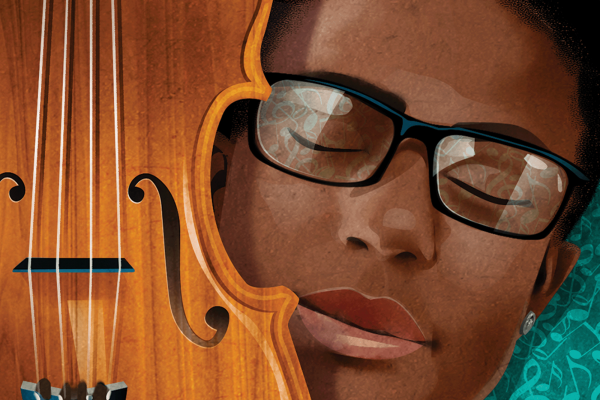Editor’s update: In February 2020, L'Arche International released a report detailing an investigation that found Jean Vanier "engaged in manipulative sexual relationships with at least 6 adult (not disabled) women," and was aware of sexual abuses against women committed by his mentor, Fr. Thomas Philippe. For additional reporting and commentary on this news, visit sojo.net/jean-vanier.
“This is how the world is meant to be.”
That’s what Randall Wright, director of the exceptionally powerful new feature-length documentary Summer in the Forest, said he thought the first time he visited one of the L’Arche communities founded by Jean Vanier that are the subject of his film.
After learning about the mistreatment that many people with disabilities suffered in psychiatric hospitals and other large institutions at the time, in 1964 Vanier, the Canadian Catholic theologian, philosopher, and humanitarian, invited two men — Phillippe Seux and Raphael Simi — to leave the psychiatric hospital and live with him.
So began L’Arche (French for “ark”): small communities — homes, truly — where people with disabilities and people without live, work, and care for each other. Today L’Arche has 152 communities in 37 countries around the globe.
Summer in the Forest follows the lives of several L’Arche residents in Trosly, France and Bethlehem, Palestine, as they interact with one another and with Vanier, who turns 90 later this year. Among the people featured in the film are several residents from the original community (La Val Fleuri), including Seux, who is now in his late 70s and has lived with Vanier for more than half a century.
“It’s so exciting to get to know somebody with intellectual disabilities, be it at L’Arche or somewhere else, but certainly in a context of a very beautiful and very happy existence. I thought the film could offer the same experience,” Wright told me in a recent interview.
“These people are special. Of course, they’re ordinary like everyone else — they lose their temper, they have squabbles — but when it comes to relationship, they know the importance of trust, they know the importance of love. And they’ve learned that through suffering. There’s something there that we all need, and that’s the bit I wanted to film.”
The first L’Arche resident we meet is 75-year-old Michel, as he awakens at daybreak in his room at La Val Fleuri, the cozy manor house he has called home since he was a young man.
“You meet this very unprepossessing, strange man with eyes staring in two directions, shaving himself at the beginning of the film, who is Michel,” Wright said. “You don’t know who he is. At the end of the film, I hope you love him and realize what an extraordinary person he is.”
Mission accomplished.
During the course of the film, we learn a lot about Michel, whose disabilities apparently began when he had a severe reaction to an inoculation when he was six months old. He was ostracized by the small French village where he grew up, began to have behavioral issues, and was sent to a psychiatric hospital, where he was beaten regularly and heavily sedated. Before finding his forever home at L’Arche, he once walked 30 kilometers to his sister’s house to escape his tormenters.
While Michel still has occasional bouts with anger, the unconditional love and care he has received since coming to live at L’Arche more than 50 years ago has transformed him.
“He’s reconstructed his whole life. He’s found a home, he offers support to others, he’s thought about the evil in the world and come to terms with it. He’s got a strong faith. He’s an extraordinary man,” Wright said.
Vanier puts it this way: “You see, the wise and the powerful are up in their heads, whereas the weak are in the dirt. The weak and the foolish: they have been chosen to confound the wise and the powerful. So somewhere the weak lead us to reality, whereas the so-called wise and powerful lead us to ideologies. But for peace, it’s to accept weakness. Weakness then becomes the transmission of a cry, and the end of a cry is a coming together.”
There is something palpably tender about the way the film treats the people of L’Arche and their stories. It is immediate and intimate, an invitation to connect on a deep level that mirrors the kind of sacred companionship present in the communities themselves.
Last year, Pope Francis called for a “revolution of tenderness:”
And what is tenderness? It is the love that comes close and becomes real. It is a movement that starts from our heart and reaches the eyes, the ears and the hands. Tenderness means to use our eyes to see the other, our ears to hear the other, to listen to the children, the poor, those who are afraid of the future…Tenderness means to use our hands and our heart to comfort the other, to take care of those in need.
On the front lines of the tenderness revolution, the winning strategy, if L’Arche is any indication, is equal parts love and joy. “Laughter breaks down barriers,” Vanier says in the film.
Summer in the Forest is rich with moments that will change you, if you let them. None more so than the scenes where Vanier visits and prays with 33-year-old Sebastian. Injuries he received in a car accident left him with profound intellectual and physical disabilities, but they have not harmed his spirit.
Recumbent in a motorized wheelchair, Sebastian’s bright eyes and huge smile beam a kind of relentless joy that is, obviously, infectious. While he cannot speak the way most of us do, Vanier has no problem understanding his friend, leaning in so close during their conversation that their foreheads nearly touch. “You are beautiful,” Vanier tells him.
“When I spoke to Jean about Sebastian he said, ‘I love going to see Sebastian and praying with him because Sebastian gives me this great sense of love and hope. I go there to fill up again with a sense of hope,’” Wright said.
Perhaps the most eloquent articulation of this is something you won’t see in the film, because it happened just off camera.
“There’s a shot where Sebastian looks at the camera and then looks back at Jean. Sebastian was very keen that Patrick (the cinematographer) be part of their prayer, their being there together,” Wright explained.
Wordlessly, Sebastian extended his arm, reaching toward Patrick until he could hold his hand.
It is a holy moment, and seeing it here brings me to my knees. Literally. This beautiful, fragile man, the most vulnerable of the vulnerable, reaching out to the margins to make sure everyone was included.
The ability to offer that kind of love to everyone around you — that’s true power.
“Love is not power, it’s a meeting, it’s a relationship,” Vanier says in the film. “It’s something that happens when we enter into relationship where I’m not seeking power over you and you’re not seeking a power over me, but it’s a coming together in a mutual presence. We at L’Arche, we want to be experts in presence. And presence is taking time, taking time and wasting time, apparently, to become who we’re called to be.”
“L’Arche is not a utopia,” he says. “It is a hope, where we can bring people together.”
Cathleen Falsani’s entire interview with the filmmaker Randall Wright is available on her podcast The Shwell. Click here to listen online or download the audio. Summer in the Forest opened last week in theaters across the United States. To find a screening near you, or for inquiries about hosting a screening in your community, click HERE.
Got something to say about what you're reading? We value your feedback!







